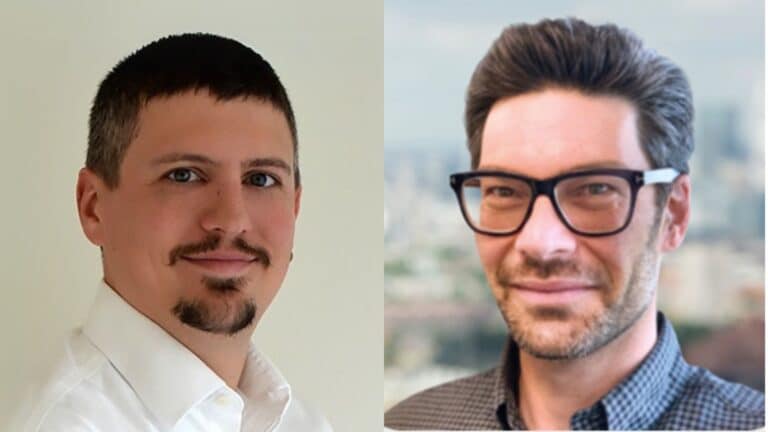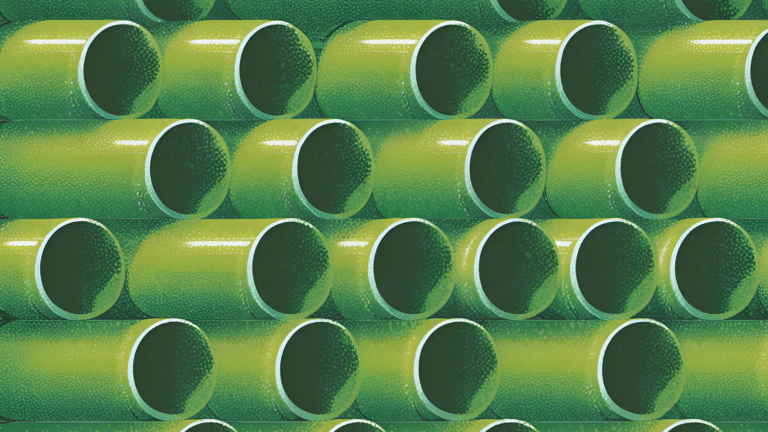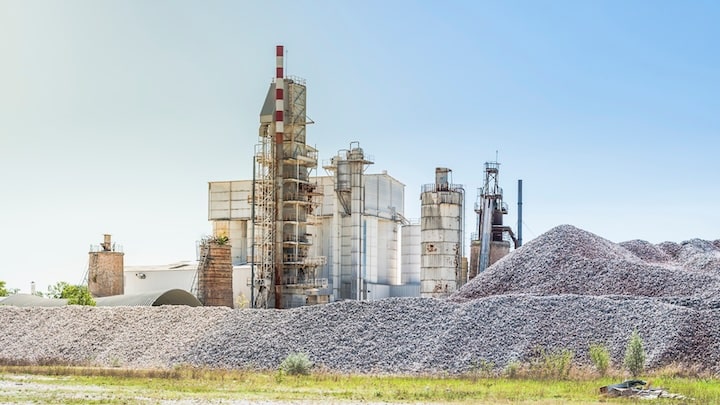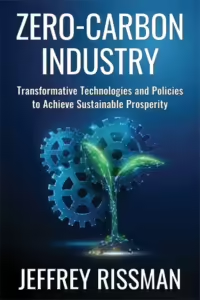Jeff Rissman: I think people get caught up in the perceived complexity of the sector because it’s true that industry produces millions of products using countless different types of industrial processes. But there are a whole array of cross-cutting technologies like energy efficiency, material efficiency, electrification of heating and use of hydrogen that can apply to a whole array of industries.
Bill Loveless: Industry accounts for one-third of global greenhouse gas emissions, and that share will only increase in the coming years. Other high-emission sectors like power and transportation are cutting emissions through renewables and electrification. But the pathways to reduce emissions from manufacturing materials such as iron, steel, chemicals, cement and concrete are still unclear. A new book by Jeffrey Rissman titled Zero Carbon Industry dives into the nuances of industrial decarbonization and lays out a roadmap for eliminating greenhouse gas emissions between 2050 and 2070. So what are some of the pathways for reducing manufacturing emissions and how can policy support this decarbonization?
This is Columbia Energy Exchange, a weekly podcast from the Center on Global Energy Policy at Columbia University. I’m Bill Loveless.
Today on the show, Jeff Rissman. Jeff is the senior director of the industry program at Energy Innovation, where he leads the company’s work on technologies and policies to eliminate greenhouse gas emissions from the industry sector. He explores this topic in depth in his new book, Zero Carbon Industry, Transformative Technologies and Policies to Achieve Sustainable Prosperity. It’s part of the Center on Global Energy Policy’s book series and published by Columbia University Press. I talked with Jeff about Zero Carbon Industry and his motivation for writing the book. We discussed the so-called hard to abate sectors and how they vary across the United States and other countries. We also explored what he calls a roadmap to the technologies and policies that can reduce industrial emissions to zero. I hope you enjoy our conversation.
Jeff Rissman, welcome to Columbia Energy Exchange.
Jeff Rissman: Thanks, Bill. Happy to be here.
Bill Loveless: Well, I’m happy to be here with you as well. I’ve read your book and learned so much from it. But let’s, for the sake of the audience, get a bigger picture of you, a little bit about your career and what brought you to where you are today.
Jeff Rissman: Sure thing. So I’m the senior director of the industry program at Energy Innovation. Energy Innovation is a non-partisan, clean energy and climate policy think tank. We do research, we do writing, we provide advice to policymakers, regulators, business leaders, anyone about the technologies and policies that can achieve a clean economy across all the sectors, sectors being transportation, buildings, et cetera. And then my program focuses on the industry sector, which is how everything is made, materials like cement and steel and plastics, as well as the finished goods we use every day.
Prior to this, I created a computer model called the Energy Policy Simulator, which looked at the effects of policies across these sectors on outcomes that policymakers care about, like pollutant emissions, jobs, GDP, the composition of the electric sector and so on.
Bill Loveless: Well, given our role as an energy think tank, I certainly want to ask you, perhaps not at the moment but in the course of our conversation, what that modeling might tell you about some of the energy policies in place as we speak. But Jeff, people write books to tell an untold story, and there’s been a lot written about heavy industries whose emissions are especially hard to abate, like steel, cement chemicals. What do you bring to the dialogue with this book?
Jeff Rissman: A lot of the information about an industry can be a little scattered and it just hasn’t been as much of a focus as other sectors either in the media or for policymakers. For instance, we’re all familiar with ways to cut greenhouse gas emissions from transport, things like walking, biking, electric vehicles, public transit or electric power sector, which would be things like solar and wind and hydro, perhaps nuclear power and so on. Even with buildings, we’re all familiar with rooftop solar or good insulation or smart thermostats and heat pumps. But people, including policymakers, have less of a sense of what to do, how is cement made and how could it be made more cleanly, since it’s all a bit out of sight.
The type of material that has been published on it that you referenced is often scattered among various technical reports from various groups, and sometimes each sector, each industry, like the cement industry, will be treated separately from others and it won’t necessarily be pulling stuff together into a big picture. What are the industrial emissions we have today? What are the technologies we could use to produce all the things we need without pollution? And what are those policies that could be implemented that would ensure those technologies are commercialized and scaled up? I believe my book is the first attempt to really bring this whole picture together as an A to Z guide to help make this sector that you said people think of as hard to abate, to help break down that perception and say, “Look, we have the technology to do this. There are policies to get it into place. All that is needed is a road map to show us what to do and when.”
Bill Loveless: Is the path to decarbonizing heavy industry clearer that most people realize?
Jeff Rissman: Absolutely. I think people get caught up in the perceived complexity of the sector because it’s true that industry produces millions of products using countless different types of industrial processes. But the bulk of emissions are from three industries, iron and steel, cement and chemicals. And there are a whole array of cross-cutting technologies like energy efficiency, material efficiency, electrification of heating and use of hydrogen that can apply to a whole array of industries. So you’re able to really cut through this complexity with a few deep dives into specific industries and then these cross-cutting technologies that can apply to those industries and the others to cover it all. There’s a way to do this that is economically beneficial, that helps secure technological leadership and public health benefits, which helps get at the other of the two main reasons why policymakers have been hesitant to learn about and implement policies in this area.
Bill Loveless: Well, the iron and steel chemicals, cement concrete count for about 60% of all industrial emissions worldwide. The reason may be more or less apparent, but explain the reason for that. I say it may be more or less apparent, but then I think not necessarily. Help us understand.
Jeff Rissman: Sure. So those industries account for a lot of emissions because they’re very large and because they require high heat, which involves today a lot of combustion of fossil fuels to generate that heat. And then in the case of, well all three, they also have additional process emissions, so emissions that are not associated with burning fossil fuels for heat but are a result of the industrial processes. And then these materials, steel and cement, which is the binder in concrete and chemicals, which makes up fertilizers and plastics and other materials we use, they’re used in such vast quantities because most of the things that we interact with, like our homes and roads and personal care products are based on materials produced by the chemicals, steel or cement and concrete industries.
Bill Loveless: And you write that these emissions are largely concentrated among ten countries with one country standing out among them, right?
Jeff Rissman: That’s right. And that country is China. So China is the top emitter of greenhouse gas emissions from the industrial sector responsible for 45% of industrial greenhouse gas emissions. And that’s because China is a huge industrial producer and exporter. They produce a lot of the products we use here in the United States as well as in Europe and in countries around the world, and they have a huge domestic market. On top of that, a lot of their energy source comes from coal, burning of coal, which is more emissions intensive than oil or natural gas, the other two main fossil fuels. So add that up, and China stands apart from others. To round out the top four, they’re India, the United States, and then I think of the European Union grouped as number four, since they have a common policymaking authority.
Bill Loveless: Let’s look closer at one of those industries, iron and steel. Help us understand what goes into steel making and the emissions that result from those processes. And the manufacturing process, of course varies among the US and other countries.
Jeff Rissman: So iron and steel can be made either primary from iron ore or secondary, which is recycled from scrap. Recycled steel is already pretty low carbon because it’s made with electricity and electric arc furnaces, but it’s limited because you can only make it based on how much steel scrap you have to recycle. And most steel scrap today is already recycled, and even if we could recycle a hundred percent, it wouldn’t meet the demand for new steel. It wouldn’t even meet half the demand. So we need a way to decarbonize primary steel making from iron ore.
Today it’s made in a machine called a blast furnace, which is this several-story tall, large furnace, lined with brick that helps retain the heat and coal and a carbon-based fuel called coke is combusted at the bottom, iron ore, which is a mineral rock, iron oxides, and then other materials like limestone to make lime are added at the top. And the high heat helps melt down this material and the coke creates a gas, a syngas, stands for synthetic gas, a mixture of hydrogen and carbon monoxide and some other things, which chemically reduces the iron ore to metallic iron. Chemically reducing meaning pulls the oxygen atoms off, leaving behind those iron atoms, and then they go on to another step, basic oxygen furnace, where the iron is converted into steel. So this is very emissions intensive, both because they’re burning all of this coal for heat and because the coke, the carbon based fuel, generates CO2, the main greenhouse gas, when it chemically reduces the iron ore.
Bill Loveless: And this is the traditional way of making steel, correct? This integrated steel making-
Jeff Rissman: Yes.
Bill Loveless: … using blast furnaces. It’s old technology. To what extent is it still relied upon in the United States?
Jeff Rissman: Blast Furnaces have been around a while, but they are the main way that primary steel and indeed the main way that all steel is made today. In the United States, however, we’re about 80% recycled steel with electric arc furnaces, recycling scrap, and about 20% primary steel, which is made in blast furnaces, largely. I believe we have one direct reduced iron plant, which is a different way of making steel, which I’m happy to get into.
Bill Loveless: Yeah, explain that. Sounds interesting.
Jeff Rissman: So blast furnaces are the dominant way of making primary steel, but there is a different way called direct reduced iron, where you have a different type of furnace, a DRI direct reduced iron furnace, and the iron ore is then chemically reduced while it’s still in a solid form. So it uses lower heat, you don’t have to heat it up enough to melt the material, and importantly, the direct reduce iron furnace doesn’t require coal or coke. It can be operated on natural gas, which is how the one in the US operates today, or it can be operated on pure hydrogen, and that’s one of the most promising ways of producing zero carbon primary steel. Because you can make hydrogen cleanly by using electricity to split water into oxygen and hydrogen. That hydrogen is called green hydrogen because of the clean way in which it was produced. That’s assuming the electricity came from zero carbon sources. Then you can use that hydrogen to reduce the iron ore iron in a DRI furnace.
Then the last step is to put it into an electric arc furnace to melt it and turn it into steel, which again can use clean electricity. That’s the most technologically mature route for clean zero carbon primary steel making. And it’s been demonstrated in Sweden with a consortium called The Hybrid Project and H-II Green Steel is building a commercial scale facility that does this also in Sweden. And in the United States, the Department of Energy recently announced some project awards funded by the Inflation Reduction Act and the Bipartisan Infrastructure Act, which includes the first ever facility that will be in the United States that creates clean steel in this way.
Bill Loveless: You mentioned some instances here where these advanced technologies are being tested. To what extent are these alternatives being adopted, at some level, demonstration, something short of commercial application, I assume at this point, throughout the world, and what keeps them from being used far more than they are today? Is there a green premium? I assume there is. A green premium attached to the price of these newer forms of steel-making.
Jeff Rissman: There are a few zero-carbon primary steel-making technologies at different stages of technological maturity. So that hydrogen DRI route is perhaps the more mature option, and it’s at the late demonstration to early commercial stage since there are these operating demonstration plants. I mentioned the hybrid project, ArcelorMittal, a large steel-making company, has another demonstration plant in Germany, and then they’re going to build a plant in the United States, the first commercial one is under construction now. A lot of this is happening in Europe because they have policies and political targets towards zero carbon across the entire economy.
Now, the US has a target as well, the nationally determined contribution target from the Paris Agreement, and we’re starting to tackle industrial emissions as part of that. But Europe is still a little ahead, which is why many of these projects first are starting in Europe. That said, the United States has couple of the early demonstration or lab scale projects for a different method of steel-making called electrolysis.
I mentioned a moment ago that you could split water into hydrogen and oxygen using electricity. That process is called electrolysis, but it’s not unique to water. You can also use electricity to split iron ore into oxygen and metallic iron, and that avoids the need to first produce hydrogen. And that can be done in a couple ways, either at high temperature or in an aqueous solution. And there are a couple startups in the United States pursuing each of those routes, based on earlier research done in Europe and at MIT.
The other part of your question was why isn’t all this being done quicker and faster and more? And I think that has to do with the need for policy to help drive the investments, make it clear that there’s a market for these materials. Electricity does cost more today per unit of energy than coal or natural gas, and so there is that cost differential to address, and some of that can be addressed through policy. And if we want to talk about electrified heating technologies, I can get into some of the technical ways to help lower that cost gap a little later.
Bill Loveless: Yeah, of course there is that cost gap, but then I was reading this Jeff, and it leaves me a little bit confused. This was from RMI, the firm RMI, and they did an analysis that I read said, “With federal funding, hydrogen-based steel has reached, quite unquote, cost parity with traditional steel.” I was struck by that, surprised by that. Again, just given what I understand to mean the so-called green premium that’s attached to these newer forms of steel-making.
Jeff Rissman: I think what RMI is saying is quite plausible because there are significant subsidies now for green hydrogen as part of the Inflation Reduction Act, and that changes the cost calculus quite a bit, really. So with Federal funding is likely referring to those subsidies, which would help bring it into cost parity. I haven’t exactly looked at RMI’s numbers, but I wouldn’t contradict them.
Bill Loveless: And there was another, what I thought to be a much farther out there option under consideration in new steel-making, a red word, Nucor has invested in a company called Helion Energy to use fusion for steel-making. Do you know anything about that?
Jeff Rissman: I have not looked into nuclear fusion for steel-making. Nuclear fusion is primarily pursued for the electricity sector rather than the industry sector as a theoretical way of generating power. Nuclear fusion is how the sun generates its heat and light, and there are various experiments, for instance at the National Ignition Facility and elsewhere on creating nuclear fusion that creates more energy than it puts in.
Heat is surely a byproduct that could be used even of the experiments for purposes. But then you’d have to cluster industrial facilities quite close to the nuclear fusion or for that matter, fission if you wanted to use heat from already commercial fission plants, because you can’t transport heat long distances without it cooling down. And the difficulty of clustering an appreciable percentage of the heat using industrial facilities of the country around the small number of nuclear facilities would be limiting. So even setting aside the fact that fusion is not technologically mature, even if we were to look at fission, which also generates heat as a byproduct, it’s not really a scalable solution for direct provision of heat to industry, not mediated by electricity.
Bill Loveless: Right. Let’s look at cement and concrete, which you write is the most used human-made material. You wrote in the Los Angeles Times earlier this year that cement is a big part of the carbon problem, but you said, “Here’s how to make it part of the solution.” What were you getting at?
Jeff Rissman: So there are exciting options for decarbonizing cement. So cement is like the glue, it’s a binder that holds together materials. It’s mostly used in concrete, which is a mixture of sand and crushed rock and cement that can be poured into any shape for walls and foundations and columns. So the emissions intense part of making concrete is making this cement. Today, it’s made in a cement kiln. You take limestone, which is calcium carbonate rock CaCO₃, and you break it down with high heat to calcium oxide CaO and carbon dioxide CO₂, which escapes to the atmosphere. About 60% of the emissions associated with cement making are CO₂ that came out of the limestone rock. We call these process emissions. Only 40% are from the fossil fuels burned for heat, mostly coal and the purchased electricity.
So to decarbonize cement making, you need to address both sources of emissions. You need to heat the cement kiln in some other way, that doesn’t produce emissions. And you need to either eliminate or capture the CO₂ that comes from the limestone. Potentially, I think in the longer term, electrification of the cement kiln is the best option for heating. There are electrical technologies I go into in my book that can provide the necessary heat at high temperatures. It’s actually been demonstrated by a company called Cementa that used electrical plasma torches to produce cement laboratory scale. But then you still have to deal with the emissions from the limestone, and you can either do that by substituting a different type of mineral, one that doesn’t include carbon, and that’s the approach that a California-based startup is using that I mentioned in that Los Angeles Times Op-ed. Or you could capture and store the carbon dioxide underground. It’s one of the niches that I think makes sense for carbon capture.
And if do both of these things, for one, it’s easier to capture the carbon because if you’ve electrified the heat, there’s no combustion exhaust gas that’s mixed in with that CO₂ from the limestone. So it’s a much purer stream of CO₂, much easier to separate. And the other thing is that cement, once it’s put into service, over years and decades, it absorbs CO₂ from the atmosphere. It’s a process called carbonation and it absorbs about half as much CO₂ as the processed CO₂, that 60% that was emitted when it was created, so about 30% of the entire footprint of cement making is reabsorbed over years and decades later.
If the CO₂ is stored underground when you initially made it, or if you didn’t have any CO₂ because you used a different type of mineral, then it’s still going to absorb CO₂ from the atmosphere. And it will pull CO₂ out of the atmosphere, and if no CO₂ is added when you made it’s a net reduction in atmospheric CO₂ and then simply building roads and bridges and other infrastructure would become part of the climate solution.
Bill Loveless: Yeah, that’s interesting. I mean, and in a way of these various heavy industries, hard-to-bate industries, maybe that’s one of the more encouraging stories you can tell these days.
Jeff Rissman: Absolutely.
Bill Loveless: You mentioned carbon capture and it’s usefulness in this instance with cement and concrete, but by and large, I got the impression that you didn’t seem so keen on carbon capture and use or storage, broadly speaking. Why is that?
Jeff Rissman: So carbon capture has its specific niche, but it has some downsides to it, and therefore it isn’t the first best option. I first turn to things like energy efficiency and material efficiency and then electrification and coming around to carbon capture where those other options can’t really do the job. So carbon capture’s downsides. Well, for one thing, if you’re using it for fossil fuels as opposed to cement calcination emissions, if you’re using it for fossil fuel combustion, it isn’t preventing the emissions upstream with the mining and processing of those fossil fuels. So for instance, when natural gas or coal are extracted from the ground, methane, the main component of natural gas, leaks into the atmosphere and that leakage can be quite significant. Coal mine methane or natural gas leakage from well-heads and gas fields. It can contribute a significant share of the life cycle, greenhouse gases from those fuels.
Then there’s the processing steps which take energy and can have by-product emissions and transport of the fuels. And then the carbon capture process itself doesn’t capture a hundred percent of the CO₂. It can capture 90% or more, and with upgrades it could capture higher percentages, but then that requires investment. And it requires energy to power this carbon capture process, so it increases your consumption of fossil fuels. This is one reason why oil companies are in favor of carbon capture. It would increase the sales of their product, but that’s energy that folks have to pay for. These are reasons why it can be a suboptimal choice, especially for combustion processes where you can often substitute clean electricity directly.
The niche for carbon capture would be for things like the cement calcination that we already covered, potentially something from blast furnaces, especially in China, where they have many fairly young blast furnaces that are expected to operate for many decades and could be retrofitted potentially to use carbon capture. And maybe some by-product CO₂ from chemicals or refining.
Bill Loveless: Jeff, from a policy perspective, there are various options for decarbonization, including carbon pricing, border adjustments and subsidies and tax credits. You say that applying the right policies in the right order maximizes their effectiveness. What do you mean by that?
Jeff Rissman: Different policies are better suited to helping technologies at different stages of technological maturity. So the same types of policy that help technology get out of the laboratory are different from the ones that would help a commercialized technology grow in market share. I’ll give a couple examples.
So obviously R&D support is something that… While R&D is needed at all stages of a technology’s lifecycle to help it progress to the next stage, the R&D support is perhaps most intense at the early stage where you’re trying to fund this laboratory work on a technology that may be a number of years out, enough years out that it may be harder to secure private sector funding. Similarly, another good fairly early stage policy is a green public procurement program. So government, what is that? Government is actually an important buyer of many industrial products, especially steel and cement, because they go into infrastructure like roads and bridges and public buildings.
So government can set aside, they can say, “Oh, well, 5% of the funds that we spend on steel have to go to zero carbon primary steel using one of these novel processes, hydrogen-based or electrolysis.” And that will give a steelmaker the confidence they need to invest in the machinery and stand up a steel production line using this technology because they know they’ve got a guaranteed buyer and advanced market commitment. This is a type of policy government has used before. Advanced market commitments were actually important in getting COVID vaccines commercialized and green public procurement programs are used at the federal level and in several states.
Then as clean primary steel becomes more available, government can ratchet up its percentage, maybe then it buys 10% and then 20% of its steel from these suppliers. Then the suppliers can start selling their steel into the private market, other buyers, maybe car companies will want it because they want to be able to say that their cars were made with entirely green steel.
So this is all we’ve been talking about, early stage technologies and the types of policies that are great for incentivizing those. But what about a late stage technology? And this is where I think carbon pricing really comes into play. So the carbon pricing means either a cap and trade system or just a carbon tax, basically a payment for the CO₂ emitted when a product is produced. And if you implement it when the clean alternative, when the clean production process is not yet commercial, is quite early laboratory scale, then a steel maker or a cement maker will just pay the carbon price instead of adopting clean technology, because the clean technology is not yet scaled in commercial.
The goal of the carbon price isn’t to have people pay it. The goal of the carbon price is to have people switch to clean technologies instead of paying it. So it works best once there are clean options to switch to at similar cost, at competitive cost with the dirty options. And that’s why it’s a great late stage option to help ratchet up that market share and help companies make the right choices when they are choosing between commercial clean and dirty technology options.
Bill Loveless: Of course, your views on the carbon price is one shared by economists around the world. There is carbon pricing in some parts of the world, but not in the United States.
Jeff Rissman: Well, we have carbon pricing at the state level. California has carbon pricing and Washington and Oregon, and there’s the regional Greenhouse Gas Initiative in a number of eastern states. Although that initiative doesn’t cover the industry sector. That initiative is only on the electricity sector. But the Western states do cover the industry sector. And you’re right that it’s applied quite widely in other parts of the world, most famously perhaps in Europe, where the European Union’s emissions trading system has been operating for a number of years now.
Bill Loveless: Could trade policy make a big difference? There’s a lot of discussion these days on the need for innovations and trade policy to promote an energy transition.
Jeff Rissman: Absolutely. So there are a few trade-related policies that can be important. This is especially relevant for industry because a lot of industrial goods and materials are sold internationally. Just like we were talking about China being a major emitter because it exports a lot of goods as well as consuming a lot of goods domestically. So if you want to address emissions from the industrial sector globally, you can’t ignore trade. There are two or three ways to go about this from a policy perspective.
One is to include embedded emissions in your policy. So if you have a subsidy, if you have a carbon price, if you have a standard or a threshold for qualifying for green public procurement, all of them are based on the emissions associated with the production of the product or material that would be incentivized or required or purchased under the program. So those emissions have to include upstream emissions, meaning emissions from the supply chain, from suppliers, no matter what country they’re located in.
Then if a supplier wants to get the benefits of this policy, whether that’s getting an incentive, financial incentive or qualifying for green public procurement, they’ll have to procure clean materials from their suppliers. So they’ll need to go and even in a country that doesn’t have strong climate policy of its own, they can go to those suppliers and say, “We care. We want you to produce these materials in a clean way, and then we’ll buy them.” And that’s one way to spread decarbonization beyond the borders of the specific countries that are enacting the policy.
Another key method is called carbon border adjustments. And this is something the European Union is doing. It helps to protect the domestic industry within Europe or anywhere that implements this policy from unfair competition abroad and at home. Essentially, it says that if a material or product is being imported into Europe, they look at the carbon intensity of that product, meaning what was emitted when the product was produced. If it’s above the threshold set by the EU, then it’s taxed according to the embedded or embodied emissions, those emissions that happened when it was made, to put it on an even footing with the producers inside the EU. So there’s no financial advantage for producing something in a dirty way.
Similarly, if there’s a product exported from the EU to a place that has no carbon pricing or weaker carbon pricing, they can get it rebated so that the exports from the EU are not disadvantaged in that other market relative to competitors. So this helps to ensure that they have the right economic incentives and are not out-competed, even if they’re an energy-intensive trade-exposed industry. Similar policies have been floated for the United States, carbon-sensitive border pricing or border taxes, but have not been enacted yet in the United States.
Bill Loveless: Earlier this year, Jeff, you were appointed by Energy Secretary Jennifer Granholm to serve on DOE’s Industrial Technology Innovation Advisory committee. What insight into DOE’s programs has that appointment brought to you from it? Can you see what’s working and, maybe, what’s not quite working yet. And we talked at the top of this show about the modeling that you do as well, which I assume would help in your response.
Jeff Rissman: It has been useful to be on this committee. Now, the committee was just established. We had our inaugural meeting, so it’s still early days, but one thing it highlights is that DOE is providing both funding and some thought leadership and research leadership for industrial decarbonization across a number of different DOE offices. This is something of a newer development.
There’s been some support through a former office called the Advanced Manufacturing Office. Now it’s been split into a couple offices today, but the level of support is much higher today as policymakers have become interested in achieving clean modern US industry. There’s a range of different offices, but just to give one example, the Office of Clean Energy Demonstrations just released a list of 33 projects that are getting funding for innovative clean industrial production. That’s about 6 billion in Federal funding, which was used to incentivize 14 billion in matching private sector funds. So a lot of money going into making some of these, first of a kind, innovative industrial facilities here in the United States.
So this is an area that I think DOE is doing a great job given the resources they have. I do think they need more resources because the industry sector an enormous share of the country’s emissions, counting the electricity purchased by industry, it’s about a third of US emissions. Omitting the purchased electricity, it’s a little under a quarter, either way, it’s huge. Even today, even with that increase in attention, it isn’t yet getting funding and attention proportionate to its share of the emissions it represents. So aside from bigger and more support, more research leadership, another area DOE should investigate would be energy efficiency standards and testing standards and such for more types of industrial equipment.
Bill Loveless: And of course, there’s been a lot of that’s going on on the consumer front, but as you note, not necessarily on the industrial front. The book is Zero Carbon Industry, Jeff Rissman. Thanks for coming on the show to talk about it.
Jeff Rissman: Thank you for having me.
Bill Loveless: That’s it for this week’s episode of Columbia Energy Exchange. Thank you again, Jeff Rissman, and thank you for listening.
The show is brought to you by the Center on Global Energy Policy at Columbia University School of International and Public Affairs. The show is hosted by Jason Bordoff and me, Bill Loveless. The show is produced by Erin Hardick from Latitude Studios. Additional support from Lily Lee, Caroline Pittman and Kyu Lee. Roy Campanella is the Sound Engineer. For more information about the show or the Center on Global Energy policy, visit us online at energypolicy.columbia.edu or follow us on social media at Columbia U Energy. And if you really liked this episode, leave us a rating on Spotify or Apple Podcasts. You can also share it with a friend or a colleague to help us reach more listeners. Either way, we appreciate your support. Thanks again for listening. See you next week.










